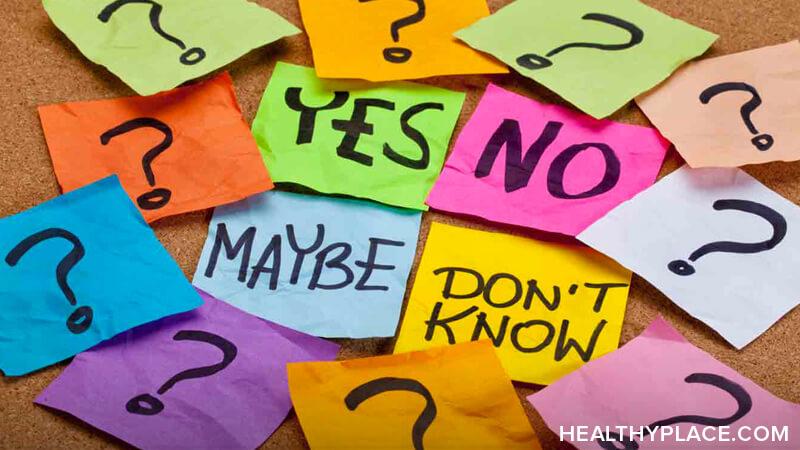Am I Depressed or Just Sad?

How do you determine if you're depressed or just sad? Navigating emotions while recovering from mental illness is incredibly tricky. For me, mental illness completely broke my internal emotional compass. Before I experienced depression, I could identify emotions like sadness, worry, and joy fairly easily. But after I experienced depression, it became nearly impossible to distinguish between depression and sadness or nervousness and anxiety. Even though I've been recovering for years, this is still one of my biggest struggles as a human being. Luckily, all those years in therapy have taught me a few things, and I'd like to share them with you.
Depression vs. Sadness
When I first started down the path toward recovery, I thought it would be easy to tell the difference between depression and sadness. After all, the Diagnostic and Statistical Manual of Mental Disorders, Fifth Edition (DSM-5) has very specific criteria that define depression, so all I had to do was check to see if my emotions met those criteria. If so, then I was depressed, and if not, then I was sad. However, anyone who has dealt with mental illness for a long time knows that it isn't that simple.
Each person experiences their mental illness in a unique way. The guidelines outlined in the DSM-5 are just that: guidelines. They aren't hard and fast rules, and it didn't take long for me to realize that I could still be very depressed without meeting all of the criteria. The biggest one for me is that I often experience depression that doesn't last a full two weeks as outlined in the DSM-5. However, my experience, no matter how brief, still meets most of the other criteria and goes well beyond what I would consider normal sadness. Over the years, I've developed my own definitions for what constitutes depression and sadness, and even though my internal emotional compass is still very tentative and unsure, it's becoming a bit clearer as I learn to validate my unique experiences in the world.
Depression vs. Sadness: Remember that Labels Are Meant to Be Helpful
Even though I have spent a lot of time trying to define my experiences with depression and sadness, and that has been helpful to a certain degree, there are also times where it has been hugely detrimental. Sometimes, I get so consumed with labeling my experience that I forget that labels only help us cope with problems, they can't solve them all on their own. It's like part of my brain thinks that if I can correctly identify what I'm experiencing, then it will go away.
In reality, knowing what's going on only helps me choose the right tools for dealing with the situation. That means that sometimes if you're feeling stuck and unsure about whether you're experiencing an emotion or a symptom of mental illness, it's less helpful to obsess over a label, and more helpful to simply try out some coping mechanisms and see if anything helps. Something I've worked on a lot in therapy is remembering that the goal is not to be "right," but to be healthy. After all, as I mentioned before, each person's experience of mental illness is unique, and even the professional criteria for diagnosis are really just guidelines.
How do you tell the difference between your regular emotions and your symptoms? Have you found labels helpful? Share your experience in the comments.
APA Reference
Griffith, M.
(2019, December 24). Am I Depressed or Just Sad? , HealthyPlace. Retrieved
on 2025, December 31 from https://www.healthyplace.com/blogs/recoveringfrommentalillness/2019/12/am-i-depressed-or-just-sad